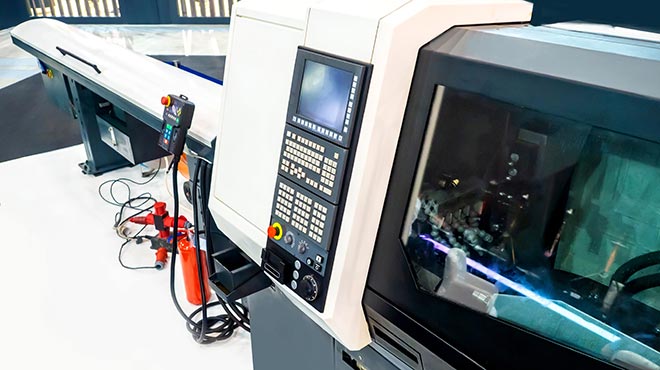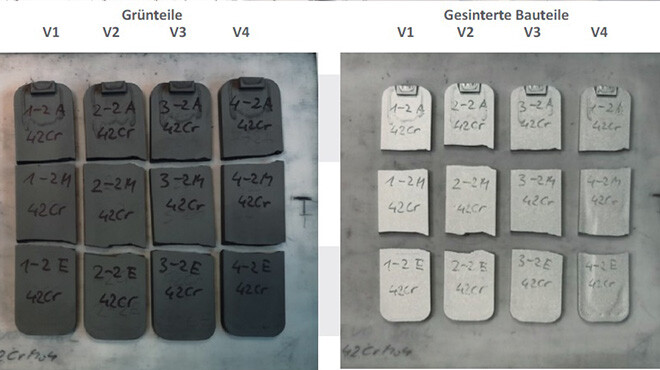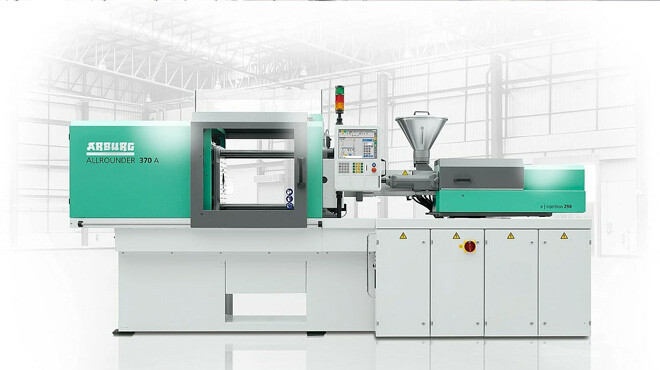Practical test for density measurement using the MIM method
What awaits you here: INTRODUCTION TEST SETUP AND IMPLEMENTATION RESULTS OF DENSITY MEASUREMENT OPTIMISATION OF PRODUCTION PARAMETERS CONCLUSION AND...
4 min read
Philipp Prüße : 03.06.2024

The production of high-quality components is of crucial importance in many industries, whether in the automotive industry, medical technology or electronics. One efficient and precise production method that has become increasingly important in recent years is MIM or metal injection moulding. In this manufacturing process, the density distribution within the injection-moulded components, the so-called green parts, plays a decisive role in the quality of the end product. In this article, we will explain the fundamental importance of a constant density distribution for the MIM process and discuss the relationship between density distribution and shrinkage behaviour.
Before we look at the significance of density distribution, it is important to understand the MIM process. MIM stands for ‘Metal Injection Moulding’. It is a manufacturing process in which metal powder is mixed with a binder and injected into an injection mould. Metal injection technology is a new way of producing precision steel parts with complex shapes more economically than before.
The Metal Injection Moulding process has its conceptual origins in injection moulding technology for plastics and offers the same comprehensive design freedom in terms of geometry and material. However, the end result of the process is a high-strength, metallic precision part.
As the German term ‘Powder injection moulding’ suggests, a very fine metal powder, mixed with a binder plus alloying elements if necessary, forms the material basis for injection moulding. Using modern thermoplastic injection moulding machines, the raw material (‘feedstock’) is melted and inserted into the mould.
The component produced in this way is called a green part. After cooling, the binding agent and flux that made the metal powder sprayable in the first place is removed from the solidified green part. This process is known as ‘debinding’. Debinding is usually carried out by thermal treatment or chemical processes. After debinding, we speak of a ‘brown part’, which is porous and does not yet have the desired strength and hardness.
In order to give the component the desired mechanical properties, the brown part is then subjected to a further step - sintering. During sintering, the component is sintered in a sintering furnace. This means that the metal particles are fused together by heat, giving the component its final shape, density, strength and hardness. The sintering process also leads to a reduction in the volume of the component (approx. 20 %), as sintering closes the open-pored areas of the material, which is why the component shrinks. This shrinking process must be taken into account when designing the components and the moulds.
Many of the individual processing steps required in other production methods are combined in a single process with metal injection moulding. Undercuts, drill holes, cross holes, threads, lamellas and even relief-like structures and engravings (e.g. logo, article number) can be produced in a single pass and with maximum precision in the injection moulding production process. This is the main advantage over traditional machining production.
The entire MIM process therefore enables cost-effective mass production of complex components with high precision. The Metal Injection Moulding process is used in various industries, including the automotive industry, medical technology, electronics and many other sectors where high-precision components with complex shapes are required.
By combining injection moulding and metallurgical sintering, MIM offers great design freedom and opens up new possibilities in the production of high-quality precision parts.
A constant density distribution in the injection-moulded green part is crucial for the quality of components produced using the MIM process. Why is this the case? If the density distribution in the green part is not constant, irregularities and cavities can occur in the component during sintering, or the component can warp. Ultimately, these defects can lead to structural weaknesses and reduced strength. This in turn affects the performance and reliability of the component.
Another important aspect is the relationship between the density distribution and the shrinkage behaviour of the component. During sintering, the component shrinks due to the compaction process. An uneven density distribution can lead to unpredictable shrinkage, which can affect the dimensional accuracy and accuracy of fit of the component or, in the worst case, lead to cracks due to distortion or torsion of the component. This in turn can cause assembly problems or cause the component to be rejected, which is associated with high costs after so much energy input and process time.
Density measurement plays a crucial role in ensuring a constant density distribution and improving the quality of components in the MIM process. Density measurement enables precise and efficient monitoring of the density distribution throughout the entire manufacturing process.
There are various measuring principles and technologies that can be used to determine density. These include, for example, X-ray methods, ultrasonic measurement or the Archimedean method. These methods allow the density distribution to be analysed precisely and help to detect and correct any deviations or irregularities at an early stage.
The advantages of fully automated density measurement with DIMENSIONICS DENSITY are obvious. By continuously monitoring the density distribution, quality problems can be recognised at an early stage and rejects reduced. With an automatic density measurement system, this is possible directly in the production hall and there is no need to resort to laboratories, as is usually the case. With this fully automated method, we can help our customers to achieve efficient production and save time and costs.
The MIM process is used in various industries, including the automotive industry, medical technology, electronics and aerospace. In the automotive industry, for example, complex parts such as transmission components or brake callipers are manufactured using MIM. In medical technology, implants, instruments and components for medical devices are produced.
The advantages of the metal injection moulding process, in particular the ability to produce complex moulds with high precision, make it an attractive manufacturing method for many companies in various industries.
Density measurement plays an essential role in ensuring a constant density distribution and therefore the quality of components in the MIM process. The correct density is crucial to ensure the structural integrity, strength and hardness of the components. Correct density distribution in the component ensures that the sintering process runs evenly and that the component shrinks to the desired extent. Fully automated density measurement enables potential quality problems to be recognised at an early stage and rejects to be reduced.
If you would like to find out more about our machines for fully automated density measurement in the MIM process, please do not hesitate to contact us. Our team of experts will be happy to assist you.
What is the Metal Injection Moulding (MIM) process?
The MIM process is a manufacturing process in which metal powder is mixed with a binder and injected into an injection mould.
Why is density distribution important in the Metal Injection Moulding process?
Consistent density distribution is critical to the structural integrity, strength and dimensional accuracy of components.
How does uneven density distribution affect component quality?
Uneven density distribution can lead to structural weaknesses, reduced strength and assembly problems.
What role does fully automated density measurement play?
Fully automated density measurement enables precise monitoring of the density distribution and helps to detect and correct quality problems at an early stage in parts produced using the metal injection moulding (MIM) process.
In which industries is the MIM process used?
The MIM process is used in industries such as the automotive industry, medical technology, electronics and aerospace.

What awaits you here: INTRODUCTION TEST SETUP AND IMPLEMENTATION RESULTS OF DENSITY MEASUREMENT OPTIMISATION OF PRODUCTION PARAMETERS CONCLUSION AND...

What awaits you here: INTRODUCTION THE IMPORTANCE OF DENSITY DISTRIBUTION IN THE MIM PROCESS ARCHIMEDEAN DENSITY MEASUREMENT: BASICS AND CHALLENGES ...

What awaits you here: INTRODUCTION MICROGRAPH COMPUTERTOMOGRAPHY (CT) AUTOMATED DENSITY DETERMINATION CONCLUSION Introduction In additive...